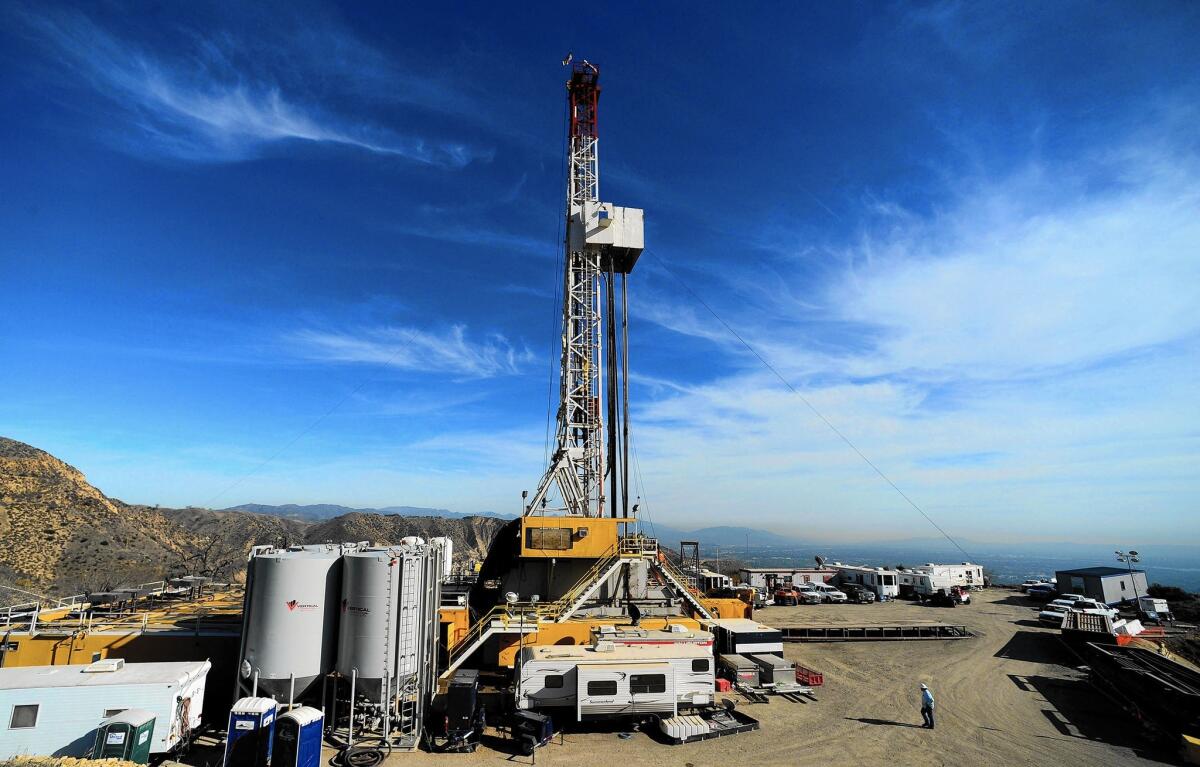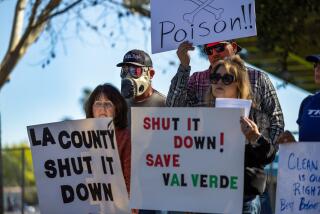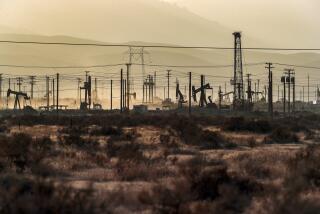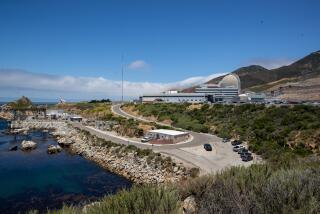Senators question energy agencies about Aliso Canyon report

State lawmakers Tuesday hammered energy agencies and Southern California utilities about the continued use of the troubled Aliso Canyon natural gas storage facility, pressing them to justify the economic and safety risk the plant poses.
“Our state is depending on a huge hole in the ground as one of the largest storage facilities,” said state Sen. Ben Hueso (D-San Diego), chairman of the Senate Energy, Utilities and Communications Committee, which held a hearing on the closed storage field and the potential for blackouts without the natural gas it provides. “Does that seem to be the most appropriate technology?
“How far is that facility from the San Andreas fault?” Hueso asked. “Is that cause for concern?”
For their part, the energy agencies and the utilities presented a united front in defending the continued operation of Aliso Canyon as a necessary source of natural gas supply to ensure reliability of electric and gas service in Southern California.
During summer and winter in particular, the agencies and utilities said, Aliso Canyon helps meet the sometimes sharp increases in demand when air conditioners fire up on a hot summer’s day and natural gas flows to homes to burn off winter’s chill.
“There’s still a very big risk out there,” said Edward Randolph, energy division director of the California Public Utilities Commission. “It’s important for all us to get out the message about the need for folks to save energy.”
Randolph and Aliso Canyon’s other defenders pulled from an April report warning of a high probability of blackouts in Southern California for as many as 14 days during the summer and an additional eight to 18 days later in the year.
The report was released by the state’s major energy agencies -- the utilities commission, the California Energy Commission and California Independent System Operator. Southern California Gas Co. and the Los Angeles Department of Water and Power also were involved in producing the 56-page report.
Hueso’s committee called Tuesday’s hearing after an article in the Los Angeles Times raised doubts about the report’s findings. Critics of the report said it failed to considered alternatives to use of Aliso Canyon, which drew national attention when one of its 115 wells began to leak in October 2015.
For four months, Southern California Gas, the storage facility’s owner, struggled to stop the leak. The problem prompted Gov. Jerry Brown to order a moratorium on injecting gas into the storage operation until Southern California Gas ensures that the wells are safe.
The utility finally sealed the leak in February, but not before it had forced thousands of residents in the nearby Porter Ranch community from their homes.
The leak all has cost Southern California Gas $665 million -- and counting. The utility’s $1 billion in insurance has covered virtually all of those costs.
State Sen. Fran Pavley (D-Agoura Hills), who sits on the energy committee, questioned whether the Aliso Canyon facility, the largest in the state and the fourth largest in the country, is too old.
“The most risky thing you can do is risk another gas leak at Aliso Canyon,” Pavley said.
On Tuesday, Brown signed a measure Pavley sponsored that ensures there will be no new injections of natural gas into the storage facility until all wells have undergone testing to detect leaks. In addition, any wells that will be used as injections resume must undergo four additional tests of their structural integrity and be certified as safe.
Wells that have not been fully tested and certified must be temporarily plugged and isolated from the facility.
Even with the protective measures, questions about Aliso Canyon’s future remain.
“Is that the best way to handle natural gas long term?” Hueso asked representatives of the energy agencies and utilities Southern California Gas, Southern California Edison and the LADWP.
Rob Oglesby, executive director of the California Energy Commission, said long-term reliability wasn’t the focus of the joint report. “We focused on reliability for this presentation.”
But, Oglesby assured the committee, “There will be no gas injected until they determine the site is safe.”
Randolph of the state Public Utilities Commission said weaning Southern California off its reliance on Aliso Canyon would require investment in the energy system.
“There is a plan,” Randolph told the committee, “for us to take that long-term assessment.”
For now, Randolph said, it’s about summer. But the summer picture isn’t exactly clear.
There are two issues: One is whether Southern California Gas will be allowed to tap the natural gas that remains in the storage wells; the other is whether the utility will be allowed to resume injecting natural gas into the field.
At Tuesday’s hearing, the panel of energy agency and utility representatives noted that Aliso Canyon’s remaining natural gas (about 15 billion cubic feet or 17% of the total capacity of the field) would meet summer needs if Southern California Gas is allowed to use it.
A Southern California Edison executive said the natural gas pipeline network in the L.A. basin was sufficient to meet demand. But the utilities would have to ensure that they and power plant operators ordered the right amount of gas at the right time, said Colin Cushnie, Edison’s vice president of energy procurement and management.
If they don’t order the gas a day ahead, they could have problems getting it, Cushnie said. And without the right amount of gas, pipelines won’t have the right pressure to function properly.
The Los Angeles Department of Water and Power said it was reviewing various ways of meeting summer demand but might need Aliso Canyon’s available gas to ensure that it can handle any unexpected problems.
Bill Powers, an engineer who conducted a skeptical analysis of the Aliso Canyon report for advocacy group Food & Water Watch, told the committee that the report’s conclusions were based on faulty modeling and should be reevaluated.
“This risk assessment is obsolete,” said Powers of San Diego-based Powers Engineering.
Pavley said after the hearing that she believes solutions can be found to guard against blackouts.
“It seems like with some smart investment,” Pavley said, “we can cover any minor unexpected emergencies from summer and winter.”
For more energy news, follow Ivan Penn on Twitter: @ivanlpenn
Follow Ivan Penn on Twitter: @ivanlpenn







